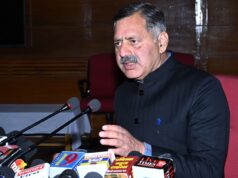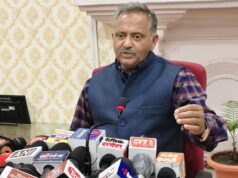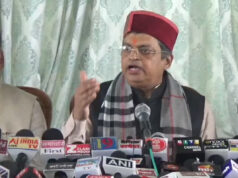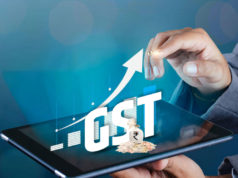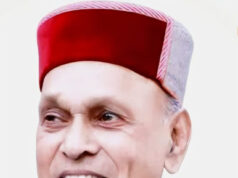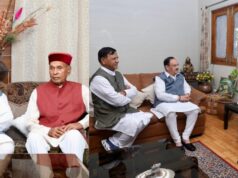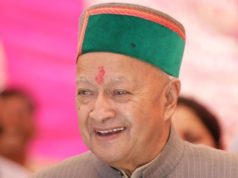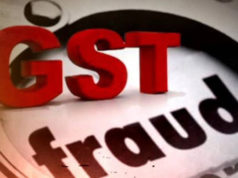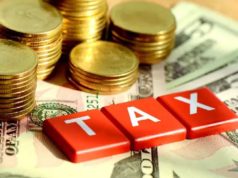
Shimla: Himachal Pradesh assembly today unanimously approved the state Goods and Services Tax (GST) Bill, paving way to implement the biggest tax reform since 1947.
Himachal Pradesh Chief Minister Virbhadra Singh, in a special assembly session today, presented the bill. Opposition BJP supported the bill. The chief minister said the GST would simplify the indirect tax regime and would reduce cost of production and inflation in the economy.
The Chief Minister, while presenting the bill detailed that “Indirect Tax Reform in India started in the mid-eighties with the introduction of MODVAT on select commodities falling under the ambit of Central Excise in the year 1986. In the year 1991, a Tax Reform Committee under Raja Chelliah was set-up, which submitted its report in the year 1993, recommending major tax reforms. Thus the efforts were initiated towards introduction of VAT by the Committees of States Finance Ministers in 1995 and 1998 respectively and that of the Committee of the Chief Ministers in 1999. VAT was finally introduced on 1st April, 2005 across the country with the exception of Haryana, which implemented the said tax in 2003. Although the Kelkar Committee had suggested a comprehensive Goods and Services Tax in the year 2003, however, it was Shri P.C. Chidambram, the then Union Finance Minister, who in his Budget speech for the year 2006-2007 proposed to move towards a National level Goods and Services Tax. He proposed 1st April, 2010, as the date for introduction of GST. Thereafter, the Empowered Committee of State Finance Ministers released the first discussion paper on 10th November, 2009 and recommended dual GST Model for India. In the Budget Speech of 2010-11, Shri Pranab Mukharjee, the then Finance Minister, extended the deadline by one year, stating that, I quote “We are actively engaged with the Empowered Committee to finalize the structure of GST as well as the modalities of its expeditious implementation. It will be my earnest endeavour to introduce GST along with DTC (Direct Tax Code) in April, 2011. It was then that the 115th Constitutional Amendment Bill for introduction of GST was tabled in the LoK Sabha on 22nd March, 2011. The UPA Government at the Centre was keen to introduce and pass the Constitutional Amendment Bill. However, due to lack of political consensus, the Bill was referred to Standing Committee on 29th March, 2011. The Standing Committee finally gave its report towards the last year of the Government and hence the 115th Constitutional Bill lapsed with the dissolution of the Lok Sabha.”
Giving credit to the Indian National Congress, Virbhadra Singh claimed that the Congress convinced the Government to accept its demands to scrap the 1 percent additional levy on supply of the goods and for giving more teeth to the grievances redressal mechanism.
Taking part in the discussion, leader of Opposition Prem Kumar Dhumal supported the GST Bill and termed it a pro-consumer act and the highest tax reform in the independent India. Dhumal said the GST would help in controlling the inflation and consumers would be real beneficiary of it. Being a consumer state, Himachal Pradesh would be one of biggest gainer of it, former Chief Minister further added.
BJP leader Suresh Bhardwaj, Ravinder Ravi, Kuldeep Kumar and GS Bali participated in the discussion. The house subsequently adjourned sine die.
Overview on Goods and Services Tax
1. Benefits:
a. India to be a common market with common tax rates and procedures.
b. It would benefit the industry through better cash flows and better working capital management.
c. GST will bring down the cost of goods and services as there will be no cascading effects of taxes.
d. GST is expected to increase revenue by widening the tax base and improving the taxpayer compliance.
e. GST is likely to improve India’s ranking in the Ease of Doing Business Index.
f. GST is estimated to increase the GDP growth by 1.5% to 2 %.
g. GST will bring more transparency to indirect tax laws.
2. Salient Features of GST:
a. GST will be applicable on the supply of goods and services.
b. It would be destination based consumption tax.
c. It would be a dual GST with the Centre (CGST) and States (SGST) simultaneously levying tax on a common tax base.
d. In Himachal Pradesh Taxpayers with an aggregate turnover in a Financial Year up to RS. 10 lakhs to be exempted from tax.
e. Small taxpayers with an aggregate turnover in a Financial Year up to Rs. 50 lakhs shall be eligible for composition levy.
f. Registration will be granted online within 3 common working days.


